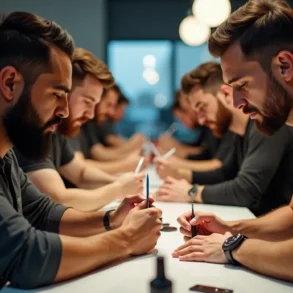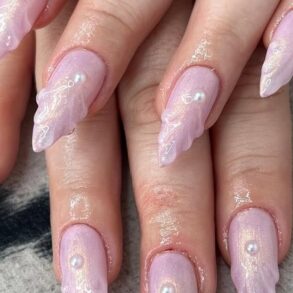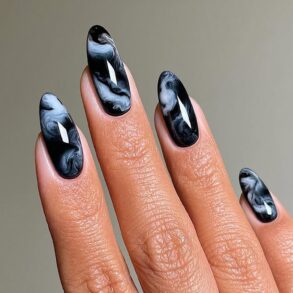
We love getting our nails done. Whether you’re into fun and colorful nail art or a simple milky manicure, there’s a very specific pleasure that sprouts from having your nails well-kept and polished. So when one breaks, it can feel incredibly frustrating and infuriating. That’s why knowing how to fix a broken nail at home is key.
Thankfully, there are ways to prevent your nails from breaking and several ways to fix a break should it occur. We asked nail artists Rita Remark, Jin Soon Choi, and Brittney Boyce to tell us why nails break in the first place, how to fix them, alternative ways to deal with them until your next trip to the salon, and more.
Meet the expert
- Rita Remark is a nail artist and an Essie global ambassador.
- Jin Soon Choi is an editorial manicurist and founder of an eponymous salon and nail product brand.
- Brittney Boyce is a celebrity nail artist and founder of Nails of LA.
Keep reading for our expert-approved guide to fixing broken nails at home.
Causes of Broken Nails
Even if you have incredibly strong nails, they can still break if you’re rough with them. “Doing the dishes, lifting a box, or even tapping my nails the wrong way have caused them to break in the past,” says Remark. However, what makes nails more prone to breakage is when they’re weak or brittle, she says.
“The nail becomes brittle and weak when exposed to harsh chemicals such as acetone, cleaning supplies, gels, or acrylics,” says Choi. “They can also become brittle and weak when you have gel or nail polish on your nails for too long—it dehydrates your nails which is usually the main cause of breakage.” She adds that the reckless removal of dip powder and gel or acrylic nails is another major cause of breakage and peeling.
According to Boyce, nails with jagged edges are also more prone to getting snagged somewhere, which can easily cause tears and breakage. And lastly, she adds that wet nails are more prone to breakage as the water softens and bends them. (This is why we recommend getting nail treatments sans water.)
How to Fix a Broken Nail
There are a couple of methods you can try, depending on whether you’re dealing with a small crack or a true break.
Use Dip Powder for a True Break
- Begin by cleaning the affected nail with nail polish remover.
- Once dry, apply nail glue to the broken area, says Choi.
- Dip the nail into the powder. Then, dust off any excess powder.
- Add another layer of glue.
- Let the glue dry off and then buff until the nails are smooth.
- Apply your favorite nail polish to conceal the repair.
To streamline the process, Boyce recommends using the Orly Nail Rescue Kit, which comes with everything you need. If anything, keep it nearby in case of a nail emergency.
Use a Tea Bag for Small Cracks
- Take a dry, mesh tea bag and cut out a little square that will cover the split. “This will serve as the bandage to the crack,” says Remark.
- Clean the broken nail with nail polish remover and wait for it to dry.
- Apply nail glue to the broken area.
- While glue is still wet, apply the tea bag patch on top and allow the glue to soak through the tea bag.
- Then, Choi recommends an extra layer of glue. “If you don’t like harsh glue, use a top coat as an alternative for a temporary solution,” she says.
- Once the glue (or top coat) is rock solid and dry, Remark says to file the affected edge and buff the glued area to make it blend seamlessly into the rest of the nail.
- Finish by applying your favorite nail polish to mask the tea bag bandage.
How to Conceal a Broken Nail
When dealing with a broken nail, reach for press-ons. Our experts recommend applying press-on nails in a pinch since they’re easy to use and will provide a protective armor to keep your natural nails in place. “You just have to be extra careful when you’re removing them,” Boyce says. Taking them off carelessly could lead to a full break.
If you have time to go to a salon, Remark says a manicurist can add a tip to the nail with resin, gel, or acrylic to restore length.
How to Prevent Your Nails From Breaking
Strong, healthy nails will help prevent breakage. “If you have naturally weak or recently damaged nails the best thing you can do is not just ‘let them breathe’—if they’re weak or damaged, they need protection,” says Remark. “Your best bet would be to use a strengthening polish.” She suggests applying Essie’s Glow & Shine nail strengthener, which is what she uses in between gel manicures to keep her nails healthy.
Choi recommends applying a cuticle oil, such as her Jinsoon Honeysuckle + Primrose Cuticle Oil, even on top of nail polish, gels, or fake nails. This will help to keep nails moisturized, which is essential for nail health.
If you don’t have cuticle oil handy, no problem. “Remember that oil penetrates the fastest, but even a hand lotion will work,” says Choi. Essentially, you want to hydrate your nails.
She and Boyce also note the importance of a healthy diet so that you get all the necessary vitamins to grow strong nails. You’ll also want to keep them protected, such as by wearing rubber gloves when you’re washing dishes or using harsh cleaning products.
This post was originally published on this site be sure to check out more of their content.







